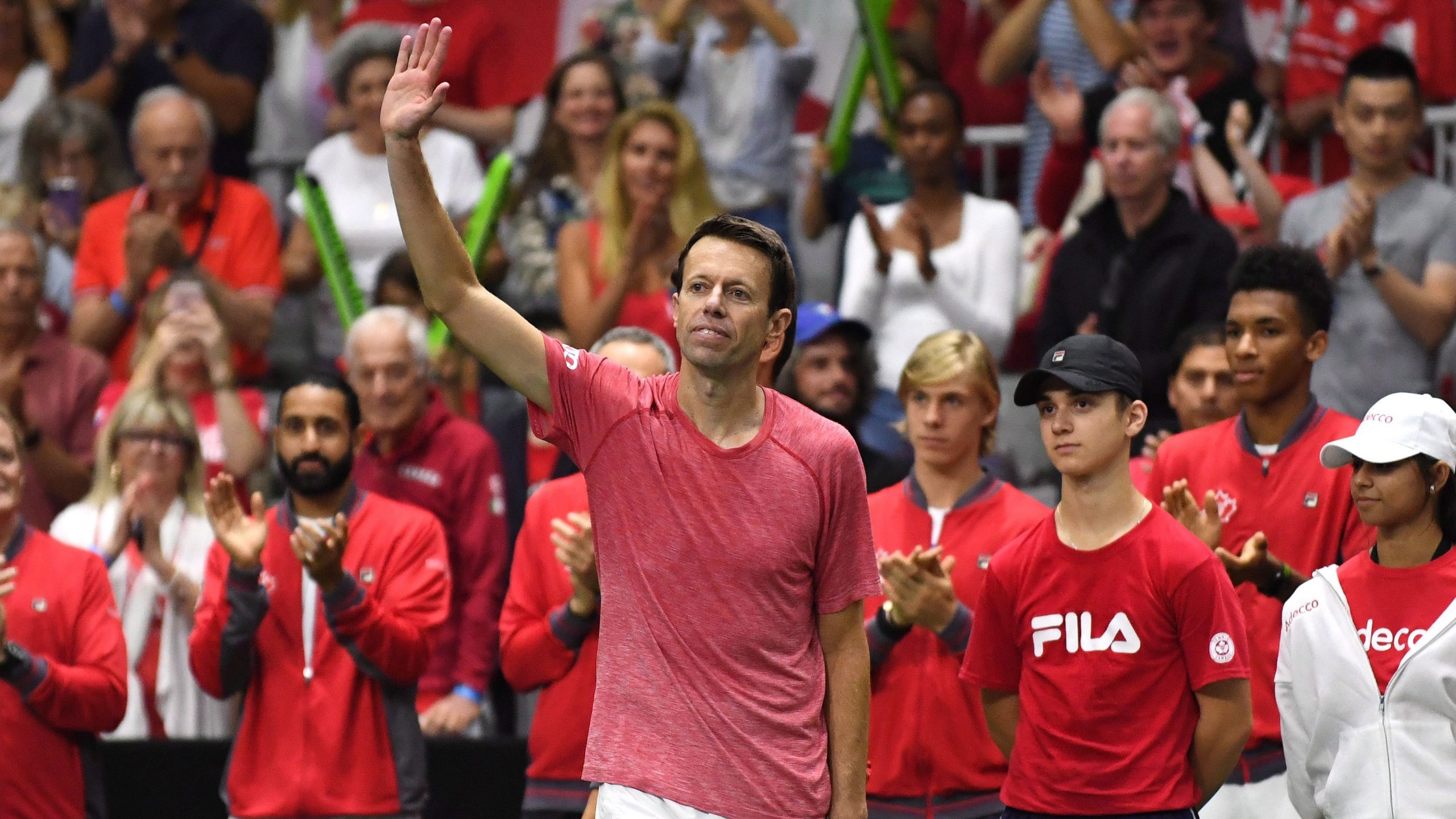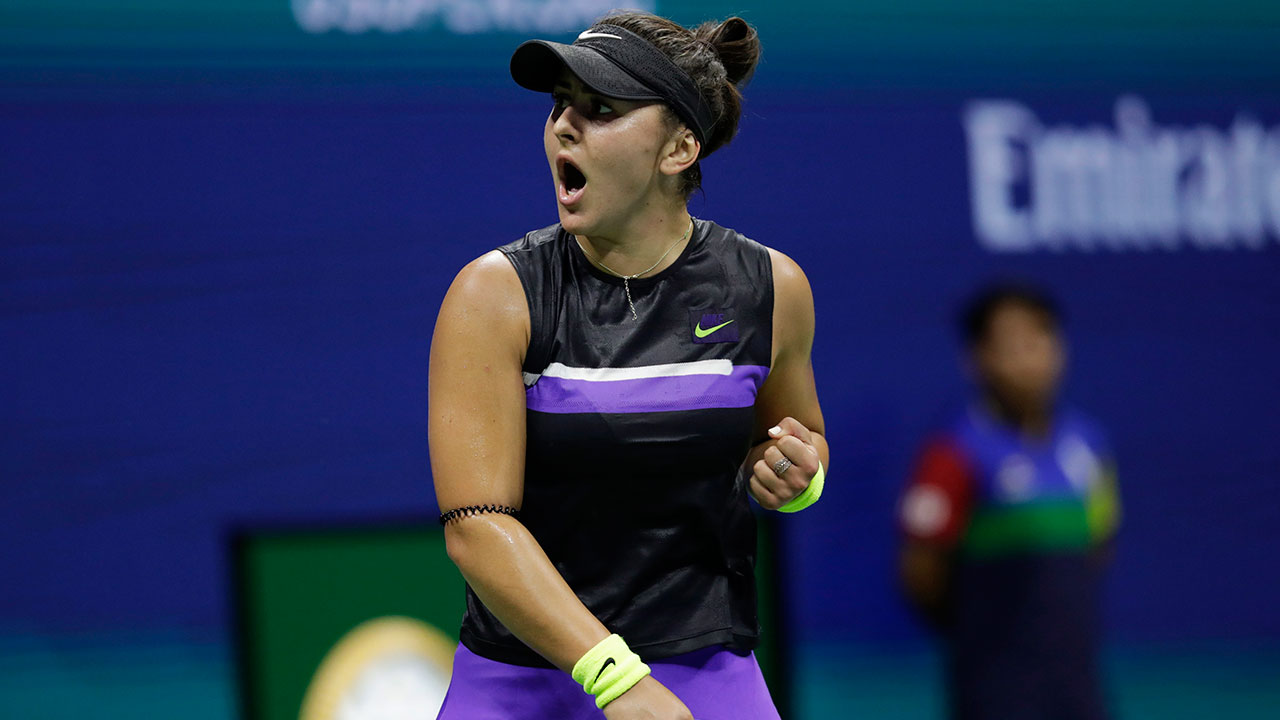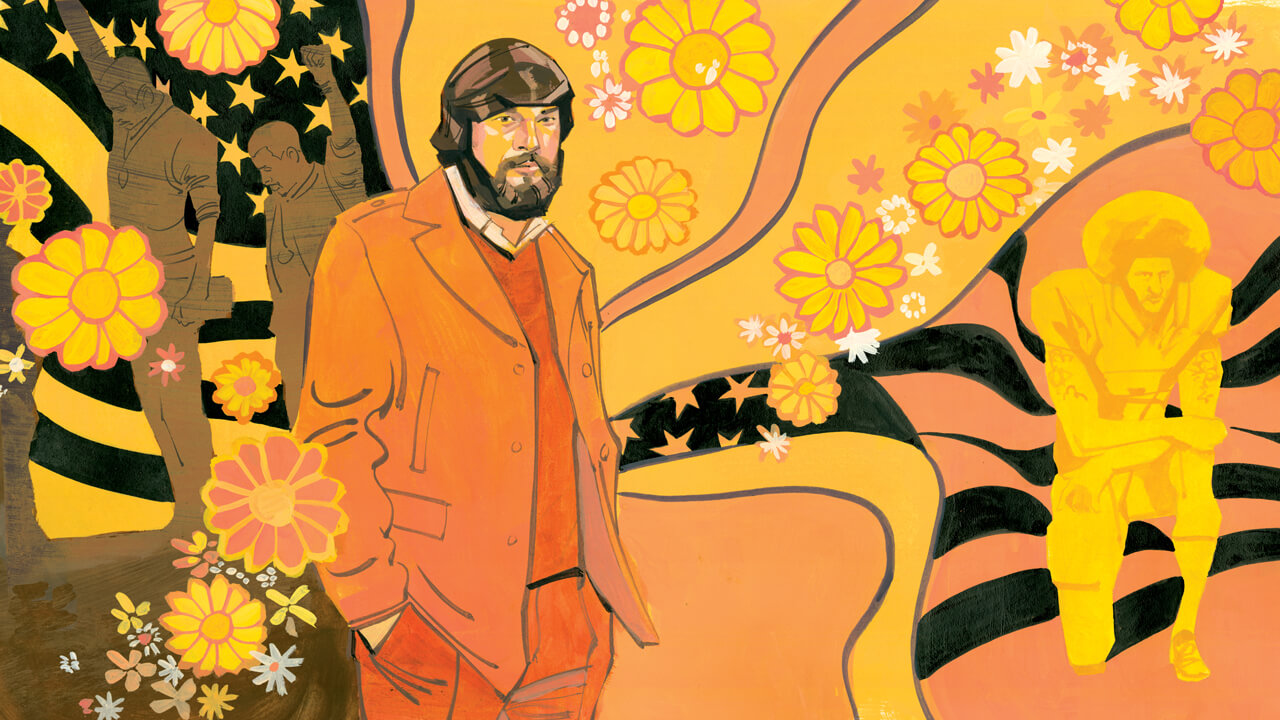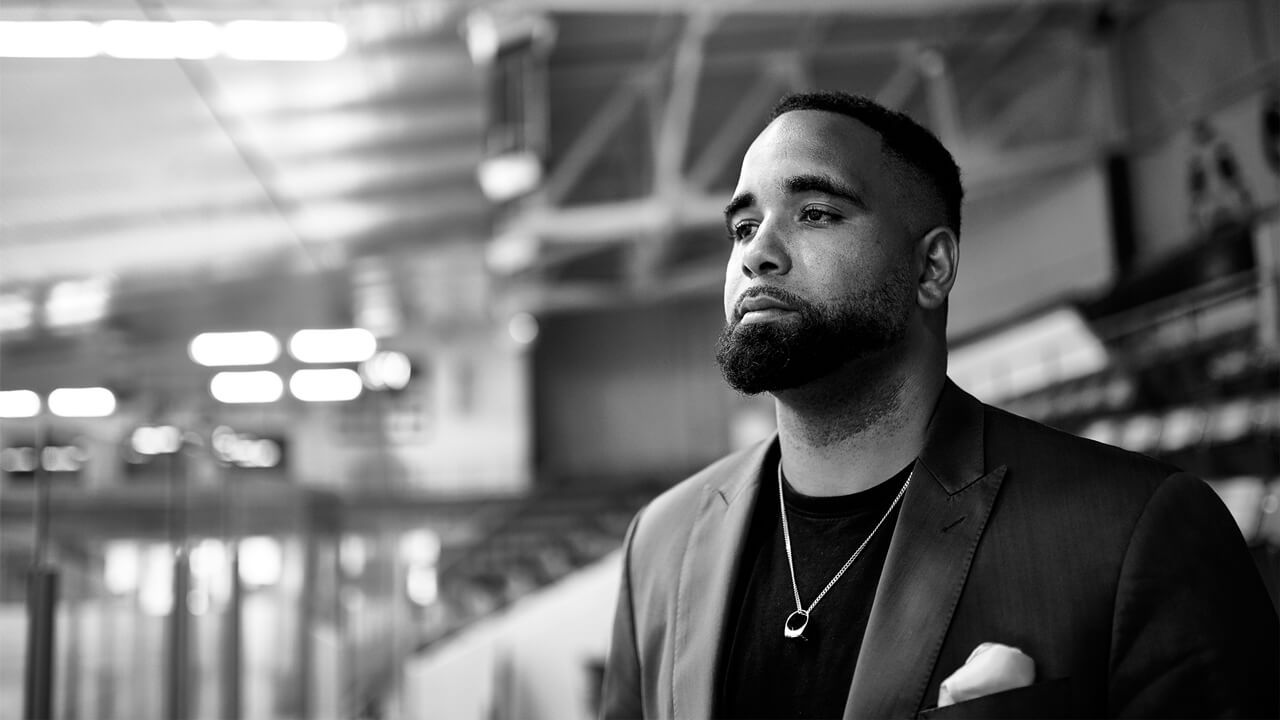Filip Peliwo was nervous. It was November 2019 and the start of tennis season was still a few months away, but it already loomed large in the two-time junior Grand Slam champion’s mind. He was heading into a meeting with Tennis Canada’s player liaison and vice-president of high performance, Louis Borfiga. Though the 25-year-old Peliwo had once sat atop the youth ranks and been all-but-guaranteed the organization’s full support, walking to meet Borfiga he felt his future hung in the balance.
Peliwo had called for the tête-à-tête at Tennis Canada’s Montreal offices because he needed to know where he stood, needed to know what kind of financial support he could expect in the coming season. Would the cost of a coach be covered, even if it was just a few weeks here and there? Would any of his travel or training expenses be covered? And, most importantly, would anyone be there help him chart a path forward as he sought to realize the potential he flashed not too long ago?
Peliwo knew that none of those things would come cheap. Chasing his dreams that year, he had spent somewhere between $10,000 and $20,000 more than he’d earned (even while sharing a Tennis Canada coach with compatriot Brayden Schnur) — a sum that accumulated interest in the form of anxiety, compounding with every unforced error, every point lost and every blown chance on tour. “Once you have to start thinking about money and stress out about, ‘Oh, I have to win this match in order to be able to break even this week and pay for the next week,’ it’s a lot of unnecessary pressure,” Peliwo says. “Especially once you have some matches where you should win, or you feel you should win, and you have the opportunity to close out and you don’t, and that would have been a big jump or a big help points-wise to move up, and then you’d have made more money … That’s where it starts to weigh on you and you have to try to push it aside, but it’s always in the back of your mind. So that kind of pressure, you can’t be thinking, ‘Oh my gosh, I have to win this to cover my next trip.’”
While Peliwo didn’t expect much from Tennis Canada, he was holding out hope for some kind of lifeline. Instead, he was cut loose. The decision was nothing personal, at least not on the organization’s side. Tennis is a results-driven sport and Peliwo, whose recent play had left him ranked around 300th in the world, hadn’t fulfilled those requirements. “That was where reality sort of hit and you’re like, ‘What am I going to do now?’” he says. “‘There’s no organized program. There’s no organized structure anymore. Who am I going to work with? Who can I afford to work with?’”
There’s a myth that lingers around sports: that they are a great equalizer, where hard work begets results and talent rises to the top no matter the obstacle — that within the confines of the game, the playing field is level. But looking at tennis, that myth quickly unravels, in large part because of the divide between the game’s haves and have nots. While its biggest tournaments and money leaders continue to rake in millions — even in a pandemic-disrupted season — those outside the top-100, like Peliwo, are often just breaking even or even going into the red as they struggle to overcome financial hurdles built into the sport they love.
Coming out of his meeting with Borfiga, Peliwo felt dejected and lost. But a recent development has provided a glimmer of hope for players like him, and sent shockwaves throughout tennis. At the US Open in late August, Canadian Vasek Pospisil and world No. 1 Novak Djokovic unveiled the Professional Tennis Players Association. The proposed group is a union in everything but name, dedicated to fighting for the interests of the players on tour, and so far hundreds of pros from both the ATP and WTA signed on in support.
The specific aims of the group are still being worked out — with organizing being priority No. 1 — but it is driven by the desire to democratize the tours through increased player representation and make the sport more equitable for those outside the top 100. “This is something I really believe in. I mean, I’m a man of principle and the reason why I started this whole thing to begin with is because I really didn’t like how I felt when you feel like your players, your fellow peers, or [you are] getting mistreated, or you don’t have a certain amount of say in decisions that affect our livelihoods and our lives,” says Pospisil.
“I felt like it was something worth fighting for.”
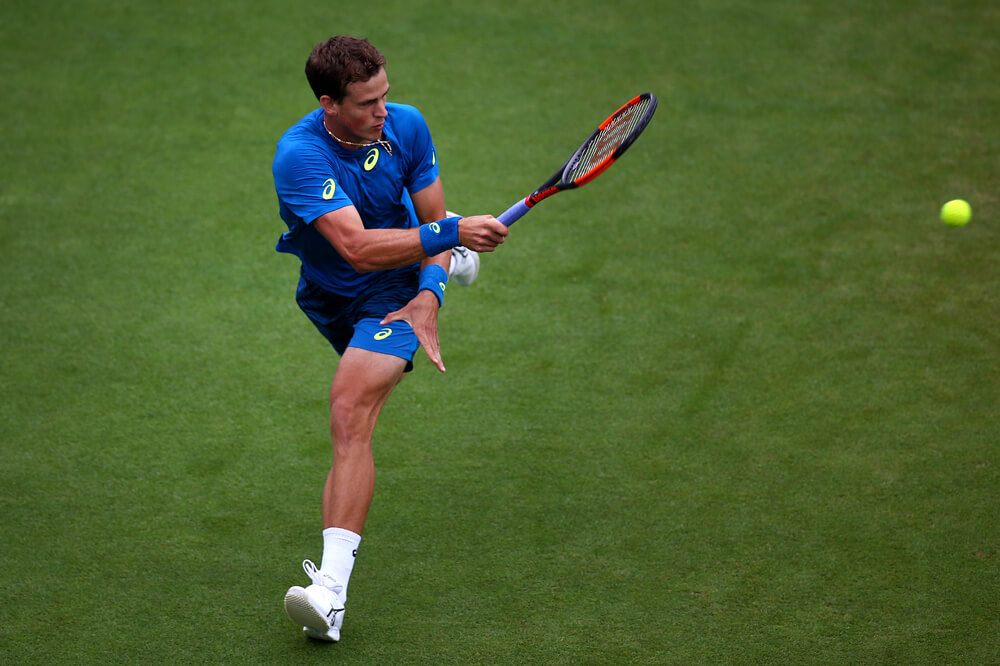
Pospisil has been beating the drum for this kind of collective action for more than a year. Last summer, the 30-year-old from Vancouver tried to push the Grand Slams to commit a greater percentage of their revenues to the players in an attempt to grow the number that can make a good living on the men’s and women’s tours from the top 100 to top 300 and double the prize money at Challenger Tour events.
In conjunction with Sloane Stephens, Pospisil convinced a majority of the top 100 players to sign a letter of engagement in which they agreed to give a share of any increase from the Grand Slams to the rest of their respective tours. The law firm Norton Rose Fulbright, which is also working with the PTPA, was brought on to negotiate with the Slams, but the tournaments did not engage.
Pospisil intended to push forward, but the ATP’s new management under chairman Andrea Gaudenzi and CEO Massimo Calvelli asked for time after taking over in January. By August, the players behind the PTPA felt they’d given ATP leadership long enough, and since then they’ve attempted to expand their ranks while rejecting criticism from the tennis establishment — including Roger Federer and Rafael Nadal, the faces of the tour — and some fans that they’re being counterproductive, even combative. “[The formation of a players’ association] was always going to happen and it absolutely doesn’t affect the vision that the ATP has right now to [merge] the [ATP and WTA] tours, increase prize money [which was raised to start the year and then slashed amid COVID-19] and everything — all that can still happen, no problem,” says Pospisil. “Because we’re not going in now to do anything like boycott or disrupt the tour in any way.”
The impetus for the announcement was the ATP’s treatment of Guido Pella and Hugo Dellien, who were removed from the Western & Southern Open in August after their fitness trainer tested positive for COVID-19. That decision differed from the way the tour handled a similar situation the next week with French players Adrian Mannarino, Kristina Mladenovic and Edouard Roger-Vasselin, who were placed under an enhanced protocol plan and allowed to continue competing at the US Open even though they might’ve been exposed to the virus via compatriot Benoit Paire.
The inconsistency in the organization’s decision-making — not the need for COVID-19 protocols themselves — once again emphasized the need for players to have a greater say on tour. What isn’t right in the current setup, according to Pospisil, is the way players are largely excluded from important conversations. The ATP and WTA represent players and tournaments jointly, with player councils limited to an advisory role to the board of directors. “It basically leaves us completely powerless,” Pospisil said in June. “That’s been the issue and that’s the reason why the graph’s unlevel: the players get paid only 14 per cent of the [total Grand Slam] revenue — seven per cent for the men, seven for the women — and that’s unlike any other sport that’s a global business. At the end of the day, we should be business partners with these tournaments and not have zero leverage or zero say or power or any kind of negotiation.”
Organizing is the PTPA’s chief focus for now, but the belief is that greater representation will go a long way in addressing a wide range of challenges that linger in tennis despite being addressed to varying extents in other major sports — from revenue sharing, pensions and travel to scheduling, insurance and medical care. “If we’re unified, if we’re together as one, well, that’s where our leverage comes into play in any kind of negotiation,” Pospisil says. “Then if [the tours and tournament organizers] are smart, then they’ll make it painless and we can just have a nice discussion and come to compromises on both sides and make it a business partnership. Right now, it’s not … I mean, we’re tennis players and we’re going up against businessmen. So … the idea is just that we feel a sense of security, that we’re organized and that we have professionals representing us and we’re not being taken advantage of.”
For those grinding it out to remain in the game, there’s no doubt change is necessary. And life outside of either tour’s top 100 is certainly a grind. Not the type of knuckle-down-and-get-it-done challenge that can be summed up in a TV or movie montage, but rather a struggle with creeping anxiety that lingers day in and day out and prompts spiralling episodes of self-doubt when one bad week turns into another, and another and another.
Peliwo, now ranked No. 351 in the world, became more familiar with that anxiety in 2020. After he lost the support of Tennis Canada, he was forced to ask himself even more difficult questions about how to deploy the limited resources available to him as he dipped further and further into his savings. “It’s emotionally very stressful,” he says. “I’m generally a very positive person. I’m social, I like to see the best in things and always try to look forward to the good things, but … there are moments where you start to get a bit down about it. Like, ‘What’s going on? What can I do better? What can I change? How can I make this situation better?’ You know? Obviously, you don’t want to be a downer. You don’t want to play yourself as a victim or whatever, but it’s definitely some days are better than others — let’s put it that way.”
The MLB, NBA, NHL and NFL all divide pooled revenues between players and owners at roughly a 50/50 split. Teams also cover coaching and fitness training, health expenses, travel and accommodations — and league-minimum salaries number in the hundreds of thousands of dollars. In tennis, players are independent contractors and can incur costs anywhere from $150,000 to $200,000 a year to play professionally if they field a full support team (including a coach and trainer). Even if they go it alone, expenses typically range from $40,000 to $100,000.
For those players without lucrative endorsement deals, then, just breaking even requires earning a considerable amount of prize money, something made more difficult thanks to two major baked-in financial issues: the limited amount of winnings available, and the cost of staying competitive on tour.
At the Grand Slams, for example, the top 104 players who sign up gain entry into the tournament and thus a hefty first-round paycheque — $61,000 at this year’s US Open. Just 16 spots are left up for grabs via qualifying, with another eight available via wild card. There was no qualifying at this year’s US Open, due to the pandemic, but at the French Open qualifying-round matches earned participants a minimum of $11,840.
The top prizes at Challenger Tour events range between $52,080 and $162,480, but an entry into the main draw might only be worth roughly $1,000 and even that can be competitive as there are nearly 2,000 men with an ATP singles ranking, and a similar number of women in the WTA.
A 2014–15 study by the International Tennis Federation, which runs futures tournaments, the Davis Cup, the Fed Cup and tennis at the Olympics, found that out of the 14,000 pro tennis players who participated in tournaments in 2013, 6,000 of them didn’t earn a single dollar and only 336 men and 251 women broke even. The research did not include the cost of a coach.
The chasm between those lower-rung tournaments and Grand Slam payouts, in addition to the priority entry granted to top-100 players, contributes to the disparity in earnings between those within the exclusive century club and those outside it. And that in turn means top-100 players have more disposable income to reinvest in themselves — by hiring a coach or physiotherapist, for example — and help them hold onto those extremely valuable ranking spots. “When I ended up getting to [No. 161 in 2018] that’s sort of where I made a little money, but it was minimal,” says Peliwo. “The jump from even 110 to top 100 — it’s enormous. Just by virtue of being able to get into Slams through the whole year, main draw, that in itself guarantees you about 200K before taxes.”
There’s also more ranking points on the line at Slams and bigger tournaments, another important advantage for top players.
It’s a catch-22, says Peliwo: “In order to get there you kind of need a team to help you; to be able to point out these little things from the outside you might not see as a player in the moment, and have the recovery aspect of having a physio … But until you break into the top 100, you can’t really pay for that, it’s just not possible with the amount that you’re making.
“And in order to get to the top 100, generally — unless you’re an exceptional case — you really do need a coach and a full-time travel team. So unless you have sponsors or you’re coming from money and you can fund it yourself, you’re not going to be able to support yourself that way. You can’t invest in yourself, because you don’t have the income to do so … I think it’s easy to look from the outside and say, ‘You’re just not good enough,’ but in many cases that’s really not true.”
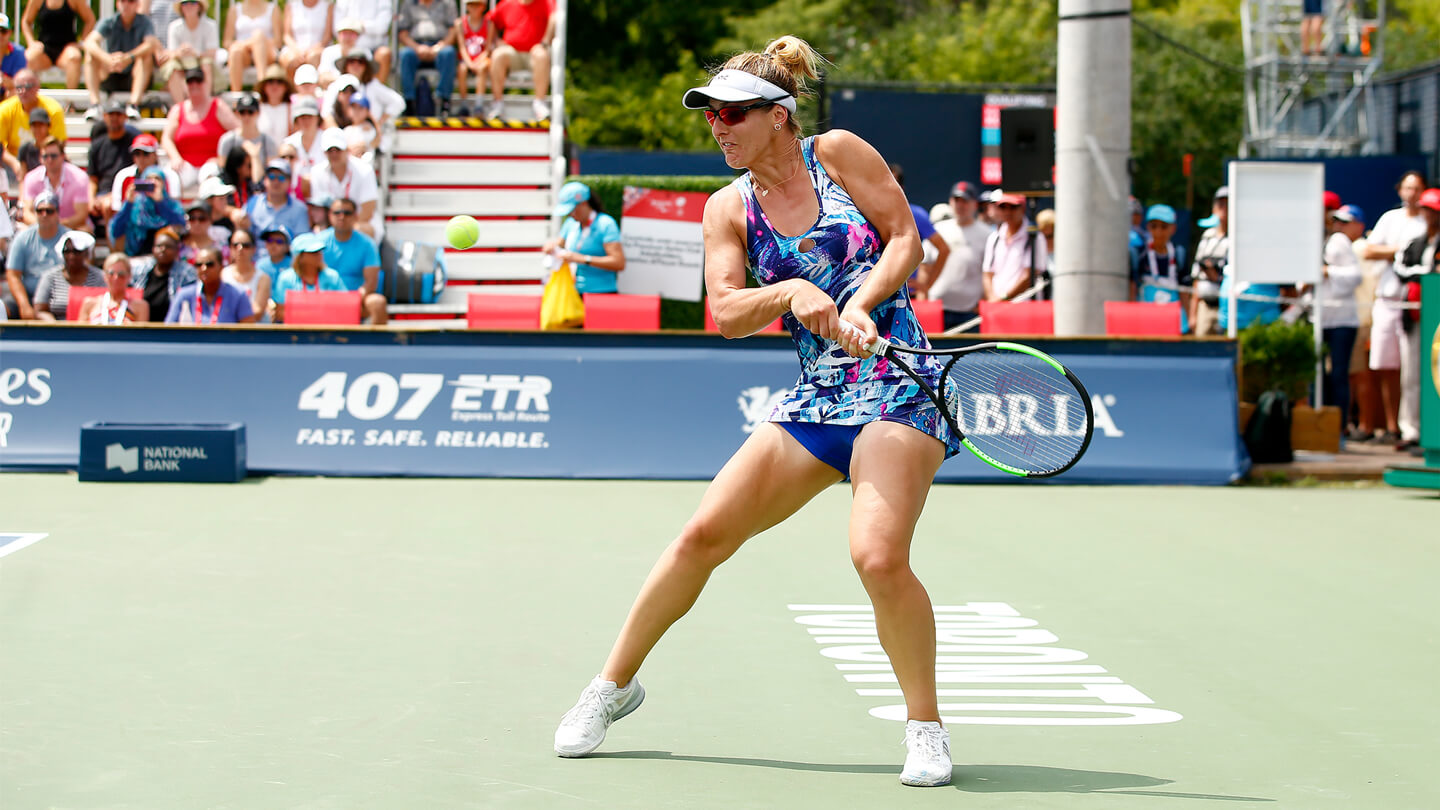
Gaby Dabrowski would never do it now — it was laughable, crazy even. But this was five years ago, back before she made a career-saving switch to doubles and became a two-time Grand Slam champion. There were valuable points and prize money on the line, and she wanted to one day pay back her parents, who sunk a staggering $500,000 into her career and had to mortgage their home when she was a teen to support her tennis aspirations.
Then 23, Dabrowski was playing in the Qatar Open in Doha. When she lost on the Thursday, she knew that her best shot at those points now lay on the other side of the world. So, she packed her things and set out for Mexico, hoping to make it in time to play in the qualifiers of the Monterrey Open the next day.
Dabrowski’s journey from Doha required her to connect through London and Dallas. She made it into and out of England without incident, but her flight from Texas to Monterrey was cancelled due to snow. “I had to stay overnight,” Dabrowski recalls. “There’s just flurries and the whole city shut down. And me being Canadian, I was looking outside and they’re like, ‘It’s snowing.’ I’m like, ‘No, it’s not.’ It was so funny. I was so upset. I was like, ‘Oh, my God, what is wrong with these people?’”
Dabrowski’s flight to Mexico was rebooked for 3 p.m. Her match scheduled for 4 p.m., an extremely tight turnaround, but luckily it rained in Monterrey, delaying the start. Still she arrived late, but her opponent, former doubles partner Mariana Duque-Marino, waited until Dabrowski arrived at around 6 p.m. — without her rackets after, of course, her baggage was lost.
Dabrowski ended up losing the match and earned somewhere between $700 and $900 for the ordeal, an amount she says was “still a lot” for her at the time. “You do what you can do, because you want to play and you want to win,” she says. “And so, yeah, you’ll fly halfway across the world, try to play a tennis match — that’s just what we do.”
For the few years she went it alone on tour after splitting with Tennis Canada over a coaching dispute, Dabrowski survived by making these types of qualifiers or play-ins on the ITF circuit. But they never paid the bills, and she’d like to see that change. “We don’t need another Grand Slam winner getting another $500,000 … I don’t really feel that that’s significant for them, because when you win a Grand Slam you get so many sponsorship deals and all this stuff,” she says. “When the Slams try to outdo each other with prize money, it’s never for the lower rounds. It’s never, ‘Oh, we’re offering the highest first round’ — that’s not what they sell. They sell the highest for the winner ever, which is fine, that’s great that that gets eyes, but at the same time, I feel like that’s not conducive to the sustainability of tennis long-term. We want the No. 200 player in the world to make a good living, or at least in the beginning a decent living, because right now they don’t make any living at all because their expenses are pretty close to what they’re earning.”
The unavoidable expenditures alone can be a strain, but if a player is hoping to gain any kind of competitive edge costs quickly become staggeringly high. Fitness trainers, massage therapists, physiotherapists and other staff can cost anywhere from $1,000 to several thousand a week, depending on their quality and experience. Coaches can be had for as low as $500 a week — if a player is just looking for someone to serve as an extra set of eyes before matches and feed them balls in practice — but a good one is at least $2,000 per week, with top players commonly shelling out $5,000. And players are also on the hook for their staff’s food, travel and accommodation.
“Maybe not everyone is going into debt, but I think it’s very, very common that a lot of players are just [putting] 90 per cent of their earnings back into their coach, and whether it’s helping or not it’s tough to say, but I think it’s just so common,” says Toronto’s Peter Polansky.
The 32-year-old, who is ranked No. 213 but peaked at 110 in 2018, has done, in his words, “Okay over the years” thanks to having some of his best results at the Grand Slams and the Rogers Cup, a Masters event. He’s gone on the road with and without a coach, and knows all too well the pressure to compete and how much his peers spend jockeying for a better position in the rankings. “I know a lot of players that are ranked 100 to 150, guys and girls, and they’ll be paying $2,500 a week for a coach … and, like, themselves, they’re just like scrounging for every dollar,” he says. “And these are good players that have had some good results and you just see them, like when they go out to eat, they’re trying to save every little bit of money … and if they go to hotels, they’re sharing [rooms] all the time.”

Pospisil explains that players in top 60 likely have the disposable income to invest in a full team and those just inside the top 100 probably have a year-long coach. But very few of those outside the century club can afford to bring someone with them on tour full-time.
While it’s up to individual players to decide how much of their winnings to put toward costly but valuable things like coaching, how much they spend on the necessary parts of life in pro tennis, such as travel and accommodation, is mostly out of their hands. Tennis is a global sport and flights around the world and nights in hotels are part of the game. “We cover everything ourselves. And that’s the tough part about tennis, is that as an individual, it’s all on you,” says Dabrowski. “And team sports, the team covers it, so you don’t have to worry so much about it”
Peliwo estimates players fly between 30 and 35 weeks a year and spend on average $500 per flight — $15,000 to $17,500 over the course of a year — with tickets to places like Australia where the season starts in January jumping up around $2,000. He conservatively pegs accommodations at $100 to $150 per night, another $21,000 to $36,750 a year.
To save money, lower-ranked players drive to tournaments when they can and carpool with their peers. Former top-100 player Dustin Brown famously lived in a Volkswagen camper van as he drove around Europe to play in ITF futures tournaments before his ascent up the rankings. Along with sharing hotel rooms, they also hustle to find fans, friends and family who live near tournament sites and might have an available guest room, couch or patch of floor. “I’ve known guys that have been going to extremes and having like four, five, six people in a room once they have to start paying for the hotel,” Peliwo says.
In a welcome new development this season, the ATP’s Challenger Tour covered five nights of accommodation for players per tournament, after implementing three nights guaranteed the year prior. However, that offering doesn’t exist on the women’s side, where the equivalent tour is run by the ITF not the WTA.
There are also equipment costs — even stringing rackets can cost a couple hundred dollars a week — and food on the road, expenses that are often provided for players at the bigger tournaments. “Once you get to the top of the tour, pretty much everything’s covered. You have a per diem, you get your hotel covered pretty much all week and you actually end up spending less money on those sort of things,” says Peliwo.
Polansky recalls playing Grand Slam qualifiers when he was a teenager and the prize money for a first-round exit was $2,000. A couple years later he picked up a total of $16,000 for reaching the main draw of three majors. Fast-forward a decade and those prizes hover around $10,000 and $60,000, respectively. That may seem like a big increase, but it hasn’t kept pace with expenses — and the competition for those spots has also grown exponentially. “What a lot of players don’t realize is that to get to that level of, not even the main draw but to get into qualifying, it’s just very tough,” says Polansky. “There’s a lot of really good players. A lot of those players I would say that are ranked 100 to 200 are just former top-100 players that have maybe lost a step, and even to be ranked top-200 now you need to be on your game, you need to take things very seriously, you need to be training your best, you need to have a coach.”
“It’s just getting deeper and deeper and deeper,” Peliwo says. “You don’t really have any easy round. Every single match you play once you get to a certain level, which is like Challengers even, like first-round Challengers, where you used to maybe be able to cruise into the quarters and then have to start to play a little better there — now, first-rounds are playing some really, really good tennis.
“It’s not an easy sport.”
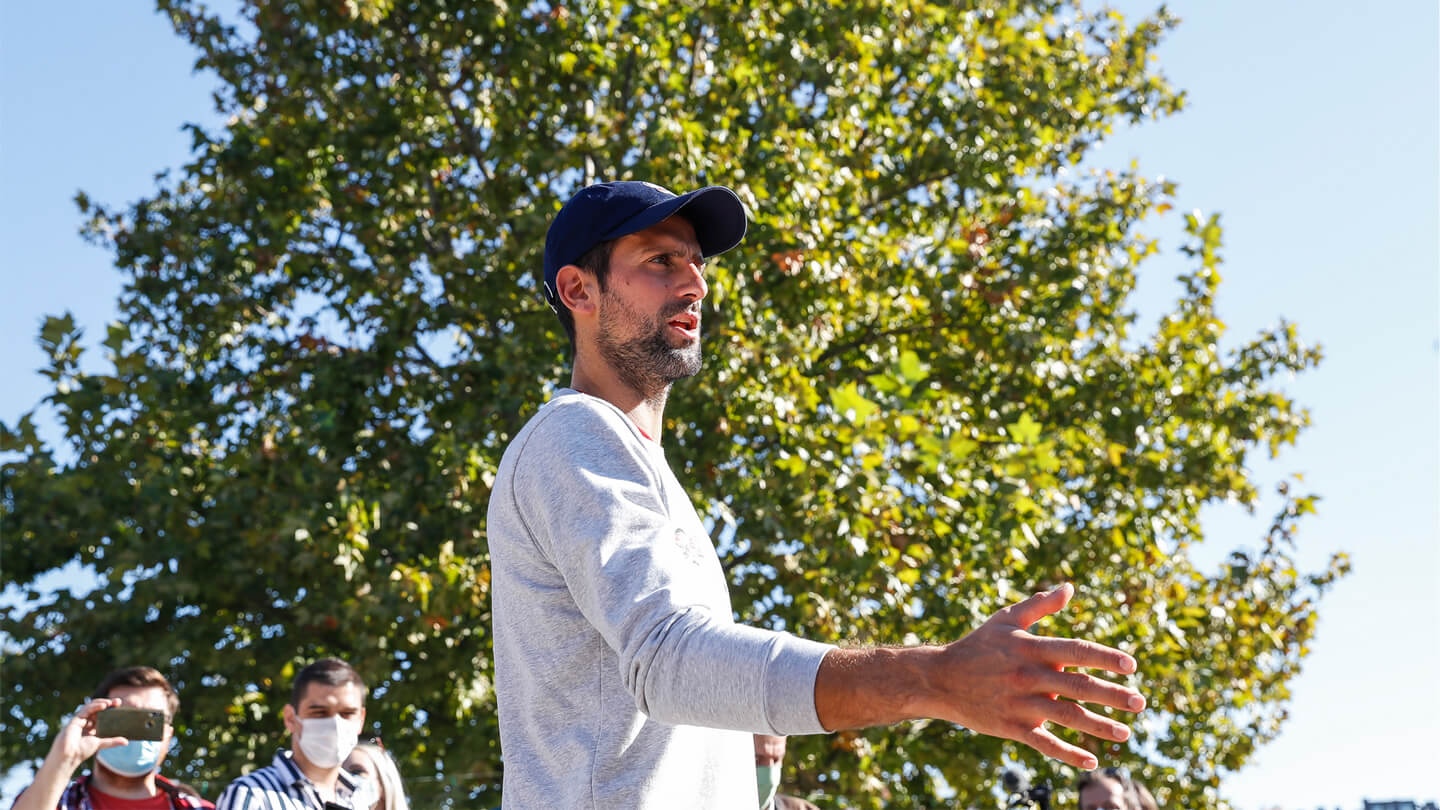
Despite the sport’s deep-seated issues, the grind players endure to stay in the game and the long odds they face to climb out of financial precarity, everyone I spoke to for this story expressed their love for tennis and overwhelming desire to carry on.
When asked if he’s ever considered quitting or switching to more stable employment, Peliwo was unwavering. “Tennis has always been what I wanted to do and I know I have the ability to get to where I want to get to,” he said. “It’s taking me longer than I would have liked, but it is what it is. I’m just gonna power through and work as hard as I can and do everything I can to get there. And it takes me as long as it takes me.
“I know I will get there — there’s not a doubt in my mind about that. Sometimes your confidence is higher than other times, but that self-belief is always there. And I know I want to be in tennis.”
If the PTPA can channel this type of desire and love for the game, it will have created a powerful tool for change. But even then, meaningful reform won’t be easy. In the aftermath of the unveiling of the PTPA, the WTA, ATP, ITF and the four Slams released a joint statement. Without mentioning the nascent association by name, the letter suggested the PTPA effort was sowing discord in the sport at a time when it is still dealing with the repercussions of COVID-19. “It is our responsibility to ensure that our sport emerges from this crisis with strong foundations on which we can build,” the statement reads. “It is a time for even greater collaboration, not division; a time to consider and act in the best interests of the sport, now and for the future. When we work together, we are a stronger sport.”
Tennis’s biggest names have also begun choosing sides. A letter released on behalf of Roger Federer, Rafael Nadal and other Player Council members urged players not to sign up, arguing that the PTPA “cannot co-exist” with the ATP and will “undermine” the new management’s efforts to improve the sport. “We are against this proposal as we do not see how this actually benefits the players and puts our lives on the Tour and security in major doubt,” said the letter.
Nadal — a 20-time Grand Slam winner — has dug in on that stance, saying at the Italian Open that it’s a difficult time and players should “stick together, and not pursue each of us our own interests.
“I understand the dissatisfaction of some athletes who signed the proposal, but there are many unanswered questions,” Nadal continued. “I think it’s not the right moment. And even if we weren’t in the current situation, many things are not clear.”
Djokovic told reporters that he sat down for a two-and-a-half hour discussion with Gaudenzi in Rome and reiterated that the PTPA is not looking to separate itself from the tours or start a boycott, but rather work within the current ecosystem. “ATP was talking about everybody being united, and that’s exactly what we want — we don’t want fragmentation,” he said. “But we feel, as players, and not just of this generation but a lot of generations in the last 20-plus years, that we just need a 100 per cent player association that will represent fully players’ rights. And that’s all there is to it.”
That conversation may have prompted Gaudenzi to soften his stance. Ahead of the French Open in late September, he said that the ATP is listening and wants to help.
“They definitely have the objective to improve life for the players on the tour, and we have nothing against that,” said the ATP chairman.
Djokovic — whose leadership came under fire over the summer after he and several fellow competitors at the Adria Tour, a tournament he’d organized, tested positive for COVID-19 — said he has also had talks Nadal and Federer in which his arguments were rebuffed. “They don’t think it’s the right time. That’s fine. That’s their opinion. I disagree with that,” Djokovic said at the US Open. “I think it’s kind of never a right time and it’s always a right time, right?”
Pospisil told me it would obviously be a lot better to have the support of two of the greatest players who’ve ever lived but its absence shouldn’t hold them back. “Tennis is much bigger than a couple players, right? So I’m extremely confident to say that the overwhelming view of this is more aligned with mine and Novak’s versus Roger’s and Rafa’s — that I can guarantee,” he said.
The Canadian said he was hopeful Nadal could be brought on board and hesitated before extending the thought to include Federer, acknowledging there are lots of conflicts of interests in tennis, including the 20-time Grand Slam winner’s management company, which partnered to create the ATP Tour’s Laver Cup. “They’ve been at the top of the game for so long and they’ve been treated like gods, and ultimately to go against some of these events would be like going against some of their probable friends, right?” Pospisil said in June.

The PTPA has also faced criticism for not involving the women’s game as part of its initial rollout, despite its stated goal of improving representation for all players in tennis. But at the US Open, Djokovic said roughly 200 WTA players had signed the association’s founding document. “Right now we are prioritizing to gather as many players as possible, both male and female players, because there’s been a lot of talk about this being an only men’s organization or association, and it’s not true,” Djokovic said.
In an effort to gather support on the WTA side, Djokovic reached out to the face of women’s tennis, Serena Williams, and Posipisil has connected with Stephens. For her part, Williams has remained mum on any potential involvement so far. “I’m obviously always Team Djokovic, but at the same time I’ve been on the WTA Tour for 30 years and I know a lot of stuff that’s happening there,” the 23-time Grand Slam winner said at the US Open, prior to her conversation with Djokovic.
Stephens said she wasn’t irked by Djokovic and Pospisil’s decision to start up the PTPA without involving the women’s side. “They said they needed to do what they needed to do. I mean, I’m not offended. It is what it is. If it’s right for us, it will be right for us. If not, then not,” the world No. 39 said in New York. “I’m not going to stress out about it too much. It might not be the right situation for us. It might be. We just have to wait and see.”
Pospisil emphasized the PTPA is in its infancy and that conversations with players on the women’s tour are ongoing. The plan is for the women to be full partners in this venture. “Better for them to be joined with us, better for us if they join us — it just makes sense,” he said. “We have the same interests, we’re all players in the same events.”
Casting further doubt over the PTPA’s commitment to true equality in the sport are past remarks made by Djokovic himself. In 2016, he said men should fight for more prize money than the women because stats indicate they bring more attention to tennis. Djokovic could not be reached for comment about his current views. Pospisil said he wasn’t aware of the remarks, but that the sentiment behind them isn’t aligned with what he’s seen from the world No.1 behind the scenes. “At least internally the conversations that we’re having … don’t seem to connect with those comments that he made in 2016,” said Pospisil. “So if something’s changed, I don’t know, but we 100 per cent see the importance and the value of having women alongside us as equals.”
The PTPA’s next steps are to create its bylaws and an organizational structure. The founding document proposes that Djokovic and Pospisil serve as initial co-presidents for a term of two years, and that the organization will be governed by an elected board of up to nine people. When the structure is nailed down, a final proposal will be ironed out and re-sent to players for approval. Then the lawyers will make the PTPA official.
In the meantime, the fight of players like Peliwo to survive on tour continues. Like many Canadians who have been hit hard by the ripple effects of COVID-19, Peliwo has mostly been relying on Canada Emergency Response Benefit, as well as money from the ATP’s relief fund — which he said has provided him “a lot less” than the $10,000 promised to qualifying players — to stay afloat with tournaments shelved.
Money’s tight, and as he starts to round into full health following surgery to address a lingering injury to his right foot, he’s considering teaching tennis on the side to give him a little extra breathing room. Because life isn’t about to get any easier: He’s staring down a reduced schedule, which means far less opportunities and a greater concentration of talent, pared down prize money and an even tighter squeeze to keep his dreams alive in the sport he loves.
“It’s a fight to the death, basically,” he says. “People are hungry. People are hungry to come back and compete and earn their living.”

